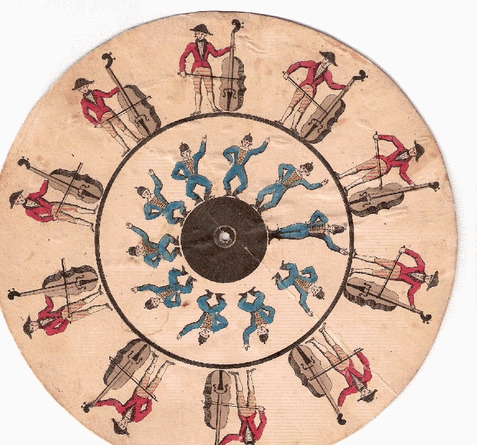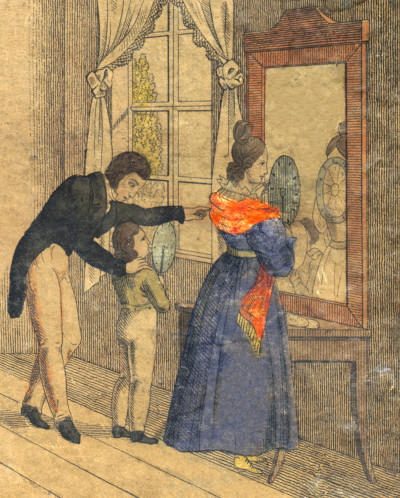Animation Series: Double Bass Player & Dancers Phenakistiscope
bsip1763
c.1832-1899, Double bass players and dancers phenakistoscope card, phenakistoscope, cardboard, Yale Peabody Museum of Natural History, Yale University, New Haven, YPM HST 050888.002, bsip1763.
The phenakistoscope (or Phénakisticope in French, aka Phantasmascope, Fantascope and Stoboscopische Scheiben) was invented by Joseph Plateau and details published in January 1833. At the time he did not name it. It is the first widespread animation device where the animation was not supplied by mechanical means such as clockwork (automata) or pull tabs. It is regarded as one of the first forms of moving media entertainment, paving the way for the motion picture/film industry.
The usual form was a spinning illustrated card that was placed on a larger slitted disc. This was then held in front of a mirror to view the animation.

This disc resides at the Yale Peabody museum. Unfortunately the museum provides no information about when or where it was created and the image available at the Yale Peabody Museum is unfortunately clipped.

Thankfully by applying rotation the missing part can be recovered. Here is the final animation recreated by Barry Pearce. This animation does not show precisely how the animation would have appeared when viewed in the mirror. The slots have not been emulated, and this would be hard to emulate without knowing how many, and how large the slots were. However, it does give us a good idea of how the animation itself would have looked.
Learn more about the phenakistiscope on Wikipedia .
Published 01.Jan.2023.
Cite this article:
Pearce, Barry. Bowed Strings Iconography Project, Animation Series: c.1832-1899 Double Bass Player & Dancers Phenakistiscope. (2023) <https://bsip.org.uk/articles/series-animation/bass-player-phenakistiscope>